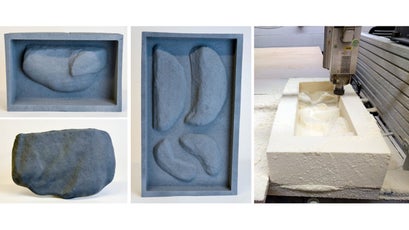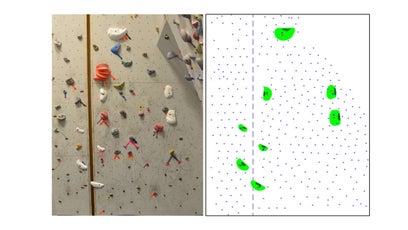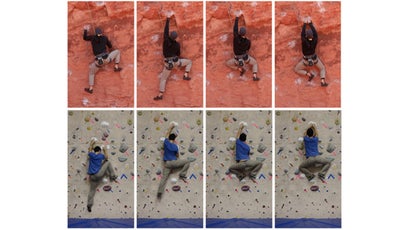Imagine 3D-printing a rock. (.) Now imagine 3D-printing an entire mountain. (Not so easy.) A few years ago, the thought of replicating a large-scale environment was pure science fiction. Today, not only is it possible—it has already been done.
Emily Whiting, a 36-year-old assistant professor of computer science, met her research partner of the same age and title, Ladislav Kavan, in 2011 while studying in Switzerland. The two became friends and climbing partners, scaling walls together all over the Swiss Alps. In August 2015, both having completed PhDs at separate universities, the pair reconnected at Dartmouth College, where Whiting teaches, and into 3D fabrication.
By 2017, Whiting and Kavan had devised a method of producing hyperrealistic indoor replicas of actual rock routes down to the crystal. “What we’re trying to do is use typical 3D printers, small amounts of material, and do it fast,” Whiting says. “We’re using a much more accessible, practical approach” than has been used in the past.
If you’re a climber, you know that one way to train for a specific outdoor route is to build a makeshift indoor version of the climb. Using whatever plastic holds you (or your gym) have on hand, you estimate the angles of the holds and your own body movement to simulate the route you’re projecting—much like from the Dawn Wall on a piece of plywood in his backyard.
While this is a great way to train, it hardly compares to being on the actual route. The friction, the texture, and the shapes of indoor holds cannot accurately account for the specific detail and variation found on a real rock wall.
The technology Whiting and Kavan devised makes this process way more accurate: A climber rappels from the top of a rock climb, taking hundreds of photos from multiple viewpoints. Next, Whiting and Kavan record a video of the climber ascending the route. Back at the lab, the images are submitted to a program called AgiSoft Photoscan, which renders a 3D digital reconstruction of the rock wall. Then, the scientists analyze the video to identify the key rock features necessary for the ascent. These features are singled out to be cast into climbing holds using 3D-printed molds machined by a CNC mill. The new holds are then affixed to the wall of a climbing gym at the precise angles and distances that correspond to the outdoor route.
By using this process, Whiting and Kavan are able to create an astoundingly accurate representation of a route’s outdoor counterpart. Whiting says they are trying to replicate the experience rather than replicate the entire visual representation. By homing in on the way you interact with and experience an environment, they are able to reproduce only what is required to facilitate the human experience.
Cloning—and even preserving—rock climbs sounds fun, but it’s just the tip of the iceberg. Kavan says this technology has the capacity to transform countless industries that rely on environmental reconstruction. The system could be applied to sites that are difficult or dangerous to access, like historical sites, cave paintings, fragile ancient artifacts, and even crime scenes.
A prime example of this is archaeological sites. Whiting notes that replicating an entire cave would be costly in both time and materials, but with this technology, archaeologists could strategically replicate only the localized regions containing ancient artwork.
In addition to archaeology, industries including engineering, architecture, and virtual reality could witness a revolution. Whiting stresses that “these applications are purely conjecture for now,” as she and Kavan have only looked into rock climbing sites in detail. That being said, the implications for climbing are astounding.
But before we start reproducing mountains and historical sites, Whiting and Kavan have more they want to explore. “We were always thinking about how to do a better job of replicating the friction properties of the rock,” Whiting says, “how to coat the holds so they actually feel like the real rock.” Long term, the duo hopes to create a database similar to where Kavan envisions users sharing data of climbs around the world and, ultimately, being able to create the routes themselves.





